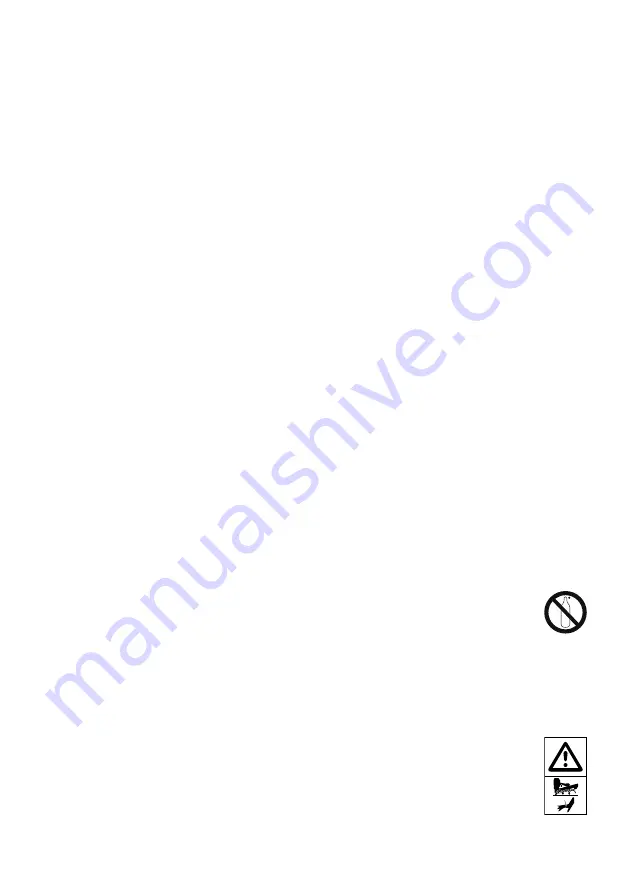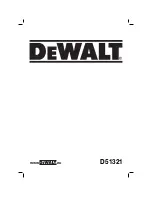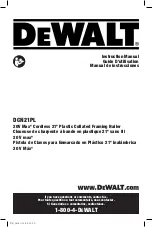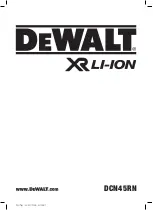
8
motion hazards. It should focus on muscular- skeletal
disorders and be preferentially based on the
assumption that decreasing fatigue during work is
effective in reducing disorders.
Accessory and consumable hazards
1. Disconnect the energy supply to the tool, such as
air or gas or battery as applicable, before changing/
replacing accessories such as workpiece contact, or
making any adjustments.
2. Use only the sizes and types of accessories that are
provided by the manufacturer.
3. Use only lubricants recommended in this manual.
Workplace hazards
1. Slips, trips and falls are major causes of workplace
injury. Be aware of slippery surfaces caused by use of
the tool and also of trip hazards caused by the air-line
hose.
2. Proceed with additional care in unfamiliar
surroundings. Hidden hazards may exist, such as
electricity or other utility lines.
3. This tool is not intended for use in potentially explosive
atmospheres and is not insulated from coming into
contact with electric power.
4. Make sure there are no electrical cables, gas pipes
etc. that could cause a hazard if damaged by use of
the tool.
5. Keep work area clean and well lit. Cluttered or dark
areas invite accidents.
6. There may be local regulations concerning noise
which must be complied with by keeping noise levels
within prescribed limits. In certain cases, shutters
should be used to contain noise.
Dust and exhaust hazards
1. Always check your surroundings. The air exhausted
from the tool may blow dust or objects and hit
operator and/or bystanders.
2. Direct the exhaust so as to minimize disturbance of
dust in a dust fi lled environment.
3. If dust or objects are emitted in the work area, reduce
the emission as much as possible to reduce the health
hazards and risk of injury.
Noise hazards
1. Unprotected exposure to high noise levels can cause
permanent, disabling, hearing loss and other problems
such as tinnitus (ringing, buzzing, whistling or humming
in the ears).
2. Conduct a risk assessment regarding noise hazards in
the work area and implement appropriate controls for
these hazards.
3. Appropriate controls to reduce the risk may include
actions such as damping materials to prevent
workpieces from “ringing”.
4. Use appropriate hearing protection.
5. Operate and maintain the tool as recommended in
these instructions, to prevent an unnecessary increase
in noise levels.
6. Take noise reduction measures, for example placing
workpieces on sound damping supports.
Vibration hazards
1. The vibration emission during operation depends on
the gripping force, the contact pressure force, the
working direction, the adjustment of energy supply,
the workpiece, the workpiece support. Conduct a
risk assessment regarding vibration hazards and
implement appropriate controls for these hazards.
2. Exposure to vibration can cause disabling damage to
the nerves and blood supply of the hands and arms.
3. Wear warm clothing when working in cold conditions,
keep your hands warm and dry.
4. If you experience numbness, tingling, pain or
whitening of the skin in your fi ngers or hands, seek
medical advice from a qualifi ed occupational health
professional regarding overall activities.
5. Operate and maintain the tool as recommended in
these instructions, to prevent an unnecessary increase
in vibration levels.
6. Hold the tool with a light, but safe, grip because the
risk from vibration is generally greater when the grip
force is higher.
Additional warnings for pneumatic tools
1. Compressed air can cause severe injury.
2. Always shut off air supply, and disconnect tool from air
supply when not in use.
3. Always disconnect the tool from the compressed
air supply before changing accessories, making
adjustments and/or repairs, when moving away from
an operating area to a different area.
4. Keep
fi ngers away from trigger when not operating the
tool and when moving from one operating position to
another.
5. Never direct compressed air at yourself or anyone
else.
6. Whipping hoses can cause severe injury. Always
check for damaged or loose hoses or fi ttings.
7. Never carry a pneumatic tool by its hose.
8. Never drag a pneumatic tool by its hose.
9. When using pneumatic tools, do not exceed the
maximum operating pressure ps max.
10. Pneumatic tools should only be powered by
compressed air at the lowest pressure required for
the work process to reduce noise and vibration, and
minimize wear.
11. Using oxygen or combustible gases for
operating pneumatic tools creates a fi re and
explosion hazard.
12. Be careful when using pneumatic tools as
the tool could become cold, affecting grip and control.
Additional warnings for tools with contact
actuation Capability
1. Do not rest your fi nger on the trigger when picking
up the tool, moving between operating areas and
positions or walking, as resting fi nger on trigger can
lead to inadvertent operation.
2. If this tool has either selective actuation for
contact actuation or continuous contact
actuation by actuation mode selectors or is
a contact actuation or continuous actuation
contact tool and marked with beside symbol,
intended uses are for production applications
such as pallets, furniture, manufactured
housings, upholstery and sheeting.
3. Do not use this tool in contact actuation for
Summary of Contents for PRO PBS151
Page 2: ...2 A A A A A...
































